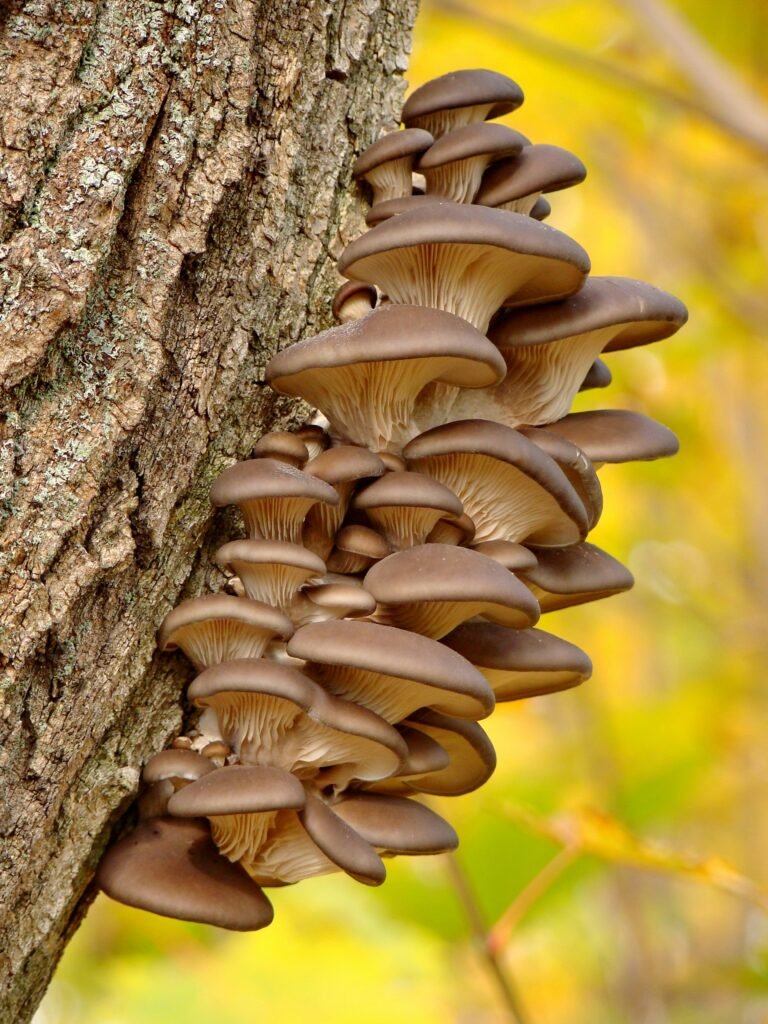In the realm of poisonous mushrooms, one particularly deadly toxin takes center stage: amatoxin. But have you ever wondered how much of this toxic substance is actually lethal? Understanding the threshold for amatoxin’s toxicity is crucial for both mushroom enthusiasts and healthcare professionals alike. In this article, we’ll explore the lethal dose of amatoxin and its potential dangers, shedding light on the importance of caution when encountering these deadly fungi.
Understanding Amatoxin
Definition of Amatoxin
Amatoxins are a group of toxic compounds found in certain species of mushrooms. They belong to a larger class of toxins known as cyclic peptides and are responsible for the majority of severe mushroom poisonings worldwide. These toxins primarily target the liver cells, causing acute liver failure, which is often fatal if not treated promptly and appropriately.
Sources of Amatoxin
Amatoxins are primarily found in several species of mushrooms belonging to the Amanita genus, including the infamous Amanita phalloides, commonly known as the Death Cap mushroom. These mushrooms are often mistaken for edible varieties and can be found in various regions around the world, particularly in temperate climates. It is crucial to note that the presence of amatoxins cannot be determined by the appearance, smell, or taste of a mushroom, making proper identification essential for avoiding accidental ingestion.
Toxicity of Amatoxin
Amatoxins possess a high degree of toxicity, with even small amounts being capable of causing severe harm to the liver and other organs. These toxins are chemically stable, allowing them to withstand cooking temperatures and preserve their toxic properties even after processing or drying. The toxic mechanism of amatoxins involves the inhibition of RNA polymerase II, a vital enzyme responsible for protein synthesis. This inhibition disrupts cellular functions and ultimately leads to organ failure.
Effects of Amatoxin Poisoning
Initial Symptoms
Amatoxin poisoning typically presents with nonspecific gastrointestinal symptoms that can easily be mistaken for common food poisoning. Within 6-24 hours after ingestion, individuals often experience nausea, vomiting, abdominal pain, and diarrhea. These initial symptoms may be mild and seemingly inconsequential, leading to a delay in seeking medical attention. However, it is crucial to recognize these signs as potential indicators of a more serious condition and seek immediate medical evaluation.
Progressive Damage
As the toxins progress through the body, they continue their havoc on the liver cells, causing ongoing damage. The initial gastrointestinal symptoms may subside or persist, but the affected individual may start to develop jaundice, a yellowing of the skin and eyes. This indicates liver dysfunction and a worsening of the condition. Without proper intervention, the toxins can continue to accumulate, resulting in further liver damage and other complications.
Organ Failure
Amatoxin poisoning can progress to fulminant hepatic failure, a severe and potentially life-threatening condition. The liver becomes severely damaged, leading to impaired liver function and the inability to detoxify harmful substances present in the body. As a result, multiple organ systems can be affected, including the kidneys, cardiovascular system, and central nervous system. The failure of these critical organs can have devastating consequences and significantly increase the risk of mortality.
Potential Fatality
Amatoxin poisoning carries a high risk of mortality, with a mortality rate as high as 30% in some cases. The severity of the poisoning and the likelihood of a fatal outcome depend on various factors, including the amount of toxin ingested, individual sensitivity, promptness of medical intervention, and the availability of appropriate treatment options. Without early and aggressive therapy, the liver damage caused by the amatoxins can rapidly progress and result in irreversible organ failure.

Lethal Dose of Amatoxin
Exposure and Toxicity
The lethal dose of amatoxin varies depending on factors such as the species of mushroom, individual susceptibility, and the amount ingested. In general, as little as half a mushroom can contain a lethal dose of amatoxin. The toxins are rapidly absorbed by the gastrointestinal tract and distributed throughout the body. Once inside the liver cells, amatoxins exert their toxic effects, leading to cellular damage and subsequent organ failure.
Variability of Sensitivity
Individual sensitivity to amatoxins can vary significantly. Some individuals may experience severe symptoms and organ damage after ingesting relatively small amounts of toxin, while others may exhibit milder symptoms or be more resistant to the effects of the toxins. This variability makes it challenging to predict the outcome of amatoxin poisoning in a particular individual, underscoring the importance of immediate medical evaluation for anyone suspected of mushroom ingestion.
Clinical Analysis
The clinical analysis of amatoxin poisoning involves a comprehensive evaluation of the patient’s symptoms, medical history, and potential exposure to mushrooms. Blood tests can detect markers of liver damage, such as elevated liver enzymes and bilirubin levels. Additional diagnostic tests, including imaging studies and liver biopsy, may be necessary to assess the extent of organ damage. Prompt and accurate analysis is crucial for guiding appropriate treatment decisions and ensuring the best possible outcome.
Case Studies
Numerous case studies highlight the devastating consequences of amatoxin poisoning. These cases illustrate the wide range of presentations and outcomes associated with different species of amatoxin-containing mushrooms. They also underscore the importance of early recognition, timely medical intervention, and access to specialized treatment options, such as liver transplantation, in improving the chances of survival. Case studies provide valuable insights into the pathophysiology of amatoxin poisoning and contribute to ongoing research aimed at advancing the field.
Factors Influencing Toxicity
Amatoxin Species
Different species of amatoxin-containing mushrooms may vary in their toxicity levels. Some species, such as Amanita phalloides, are known to be highly toxic and account for the majority of severe poisonings. Others may contain lower amounts of toxin or possess different toxins altogether. Proper identification of the mushroom species is essential to understand its potential toxicity and provide appropriate medical care.
Dosage
The amount of amatoxin ingested plays a significant role in determining the severity of poisoning. Even small amounts of toxin can lead to severe organ damage or even death. However, higher doses increase the risk and accelerate the progression of toxicity. It is important to note that the concentration of amatoxins can vary within the same mushroom, making it difficult to estimate the exact dosage ingested in most cases.
Route of Exposure
Amatoxins are primarily absorbed through the gastrointestinal tract. Ingestion of amatoxin-containing mushrooms is the most common route of exposure, but other routes, such as inhalation or dermal contact, can also lead to toxicity. Regardless of the route, prompt medical evaluation is crucial in all suspected cases of amatoxin exposure to mitigate the risk of significant harm.
Individual Factors
Individual factors, such as age, overall health, and underlying medical conditions, can influence the susceptibility and response to amatoxin poisoning. Certain individuals may be more vulnerable to the toxins due to pre-existing liver disease or immunocompromised status. The presence of other medications or substances in the body can also interact with amatoxins and affect their toxicity. These individual factors further emphasize the need for personalized medical evaluation and tailored treatment plans.

Amatoxin Poisoning Treatment
Supportive Care
The management of amatoxin poisoning involves a multidisciplinary approach aimed at addressing the various complications and supporting organ function. Supportive care measures, such as intravenous fluids, electrolyte balance, and nutritional support, are essential in stabilizing the patient and preventing further complications. Continuous monitoring of vital signs, liver function, and other parameters is crucial in assessing the response to treatment and identifying potential complications.
Activated Charcoal
In certain cases of recent mushroom ingestion, the administration of activated charcoal may be considered to reduce the absorption of amatoxins from the gastrointestinal tract. Activated charcoal binds to the toxins and prevents their entry into the bloodstream, decreasing their harmful effects. However, the efficacy of activated charcoal diminishes over time, and it is most effective when administered within the first few hours after ingestion.
Milk Thistle Extract
Milk thistle extract, containing the active compound silymarin, has been studied for its potential hepatoprotective effects in amatoxin poisoning. Silymarin has shown promising results in reducing liver injury and improving survival rates in animal models. Although more research is needed to establish its efficacy in humans, milk thistle extract has been used as an adjunctive treatment in some cases of amatoxin poisoning.
Liver Transplantation
Liver transplantation is considered the definitive treatment for severe cases of amatoxin poisoning. In cases of fulminant liver failure, where there is irreversible damage to the liver and the patient’s prognosis is bleak, transplantation can be life-saving. The availability of suitable donor organs and the patient’s overall health condition play a crucial role in making this treatment option feasible. Timely referral to a specialized transplant center is crucial to optimize the chances of a successful transplant and long-term survival.
Preventing Amatoxin Poisoning
Avoiding Wild Mushroom Consumption
The most effective way to prevent amatoxin poisoning is to abstain from consuming wild mushrooms unless they have been appropriately identified as safe for consumption. The inherent difficulty in accurately distinguishing toxic from nontoxic mushrooms underscores the importance of obtaining mushrooms from reputable sources or cultivated mushroom varieties. Avoiding foraging for mushrooms without proper expertise significantly reduces the risk of accidental ingestion of amatoxin-containing species.
Proper Mushroom Identification
Proper mushroom identification is paramount to avoid accidental ingestion of amatoxin-containing mushrooms. Those who wish to forage wild mushrooms should undergo thorough training by mycologists or join mushroom identification classes to learn how to differentiate between edible and toxic species. Relying solely on field guides or online resources can be unreliable and potentially dangerous. When in doubt, it is always safer to err on the side of caution and refrain from consuming unknown mushrooms.
Public Awareness
Creating public awareness about the dangers of amatoxin-containing mushrooms is crucial in preventing poisonings. Education campaigns, public service announcements, and targeted messages can help disseminate accurate information about the risks associated with wild mushrooms. Reinforcing the message that no mushroom should be considered safe without proper identification can save lives and prevent unnecessary harm.
Education and Resources
Providing educational resources and access to reliable information about mushroom identification can empower individuals and communities to make informed decisions regarding wild mushrooms. Local mycological societies, poison control centers, and healthcare professionals can play a pivotal role in educating the public about the risks and promoting safe practices. The more individuals are educated about amatoxin poisoning, the better equipped they will be to prevent accidental exposures.

Global Impact of Amatoxin Poisoning
Incidence and Mortality Rates
Amatoxin poisoning is a global health concern, with reported cases and fatalities occurring in various regions around the world. Unfortunately, due to underreporting and limited data, the true incidence and mortality rates are difficult to determine accurately. However, studies and surveillance systems suggest that amatoxin poisonings are more prevalent in certain areas with a higher abundance of amatoxin-containing mushrooms and a lack of public awareness about their toxic potential.
High-Risk Regions
Certain geographical regions are known to have a higher prevalence of amatoxin-containing mushrooms and, consequently, a higher risk of poisonings. Central and Eastern Europe, parts of Asia, and areas with a Mediterranean climate have been identified as high-risk regions. Factors such as climate, vegetation, and cultural practices contribute to the regional differences in mushroom species and toxicity patterns. Travelers and individuals residing in these areas should exercise caution and avoid consuming wild mushrooms without proper identification.
Economic Burden
The economic burden of amatoxin poisoning extends beyond the medical costs associated with treatment and management. The impact on healthcare systems, loss of productivity due to illness or disability, and potential long-term complications can have significant financial implications. Prevention and early intervention can help alleviate some of the economic burdens associated with amatoxin poisoning and redirect resources toward more effective public health measures.
Public Health Measures
Efforts to address the global impact of amatoxin poisoning should encompass comprehensive public health measures. These measures should focus on raising awareness, enhancing surveillance systems, improving access to specialized care, and encouraging research and development in detection methods, antidote development, and treatment innovations. A multidisciplinary approach involving government agencies, healthcare professionals, mycologists, and the general public is essential in reducing the morbidity and mortality associated with amatoxin poisoning.
Research and Development
Detection Methods
Ongoing research and development efforts are focused on improving detection methods for amatoxins. Reliable and rapid testing techniques are needed to identify the presence of amatoxins in mushrooms accurately. These methods should be accessible, cost-effective, and applicable to a wide range of mushroom samples. A better understanding of the toxicological profiles of different amatoxin species can facilitate the development of targeted detection approaches.
Antidote Development
Researchers are exploring potential antidotes or therapies that can counteract the toxic effects of amatoxins. The inhibition of RNA polymerase II by amatoxins is a specific mechanism that could be targeted for intervention. Antidote development involves identifying compounds or strategies that can mitigate the damage caused by the toxins, protect liver cells, and enhance recovery. Continued research is crucial in advancing the development of effective antidotes against amatoxin poisoning.
Treatment Innovations
The field of amatoxin poisoning treatment is constantly evolving, with ongoing research focused on finding innovative therapeutic approaches. Novel treatment strategies aim to reduce the severity of liver injury, improve organ functions, and enhance patient outcomes. Advancements in liver support systems, bioartificial liver devices, and stem cell therapies hold promise in expanding treatment options for amatoxin poisoning in the future.
Public Health Policies
The development of effective public health policies is fundamental in addressing the global impact of amatoxin poisoning. Policies should prioritize prevention, early diagnosis, and appropriate treatment options. They should also ensure that healthcare providers are adequately trained in recognizing and managing amatoxin poisonings. Public health initiatives must be supported by robust surveillance systems to accurately assess the burden of amatoxin poisonings and monitor the effectiveness of intervention strategies.

Case Studies
Historical Amatoxin Poisonings
Amatoxin poisonings have been documented throughout history, with various accounts highlighting the devastating consequences of accidental ingestion. Notable historical cases include the death of the Roman Emperor Claudius in 54 AD, believed to be caused by the ingestion of a toxic Amanita species. These case studies provide valuable insights into the ancient recognition and understanding of mushroom toxicity and underscore the continued relevance of education and prevention efforts.
Modern Surveillance and Research
Modern surveillance and research efforts have significantly contributed to our understanding of amatoxin poisoning and its impact on public health. The establishment of poison control centers, national databases, and international collaboration platforms has improved the reporting and tracking of cases worldwide. Large-scale studies and systematic reviews have shed light on the epidemiology, clinical presentation, and management strategies associated with amatoxin poisoning. Continued surveillance and research are essential in addressing the ongoing challenges posed by these toxins.
Lessons Learned
The study of amatoxin poisonings has yielded valuable lessons that can guide future prevention, diagnosis, and treatment efforts. These include the importance of education and awareness, the need for prompt medical evaluation and specialized care, and the potential benefits of liver transplantation in severe cases. Case studies also highlight the inherent difficulty in accurately identifying potentially toxic mushrooms and the dire consequences of misidentification. By learning from historical and contemporary cases, we can better protect individuals from the devastating effects of amatoxin poisoning.
Conclusion
Summary of Amatoxin Toxicity
Amatoxins are highly toxic compounds found in certain species of mushrooms, primarily belonging to the Amanita genus. These toxins target the liver cells and can lead to severe organ damage and failure if not treated promptly. Even small amounts of amatoxins can be lethal, and the severity of poisoning depends on various factors, including individual sensitivity and the amount ingested.
Importance of Prevention and Treatment
Prevention is crucial in avoiding amatoxin poisonings. Proper mushroom identification, public awareness campaigns, and educational resources play a pivotal role in reducing the incidence of accidental exposures. Timely medical evaluation and appropriate treatment interventions are essential in improving patient outcomes and reducing the risk of mortality.
Future Directions
Future efforts must focus on advancing detection methods, developing effective antidotes, and exploring innovative treatment approaches. Public health policies should be developed and implemented to address the global impact of amatoxin poisoning. Extensive research, surveillance, and collaboration are necessary to continue unraveling the mysteries of amatoxin toxicity and improving prevention, diagnosis, and treatment strategies. By working together, we can minimize the devastating consequences of amatoxin poisonings and protect the health and well-being of individuals worldwide.

